Is The Great Barrier Reef Worth Visiting?
As one of the most recognisable natural wonders on the planet, the Great Barrier Reef draws a huge number of visitors from across the world. It tops the bucket lists of many nature lovers, adventure seekers and bucket list collectors, but whilst it is the largest coral reef in the world, is the Great Barrier Reef worth visiting?
This iconic reef had been on our family’s radar for a long time, and as part of our family gap year, we decided to road-trip Australia’s East Coast. Finishing our journey in Cairns was our opportunity to finally achieve our dream of snorkelling on the Great Barrier Reef!
Trekking The Dream! contains affiliate links and is a member of the Amazon Services LLC Associates Program. If you make a purchase using one of these links, we may receive a commission. This is at no extra cost to you and helps us to keep our site up and running! Read our privacy policy for more information.

Planning To Drive In Scotland?
Top Pick for Families: Snorkelling and Diving Cruises from Cairns
Best Boat Day Tours: Cruise to the Barrier Reef
Best Helicopter Tour: Nautilus Aviation – Cairns
Is The Barrier Reef Still Worth Visiting?
At over 600,000 years old and covering over 133,000 square miles, the Barrier Reef is a truly remarkable natural wonder.
Although around 50% of the coral has suffered from bleaching over the last few decades, it is still a site of outstanding natural beauty and is well worth visiting! Encouragingly, some of the damaged areas are showing signs of recovery, and many of the corals are regaining their vibrant colours. This is partly due to conservation efforts to combat environmental challenges and partly through the natural adaptation of the corals.
The reef’s amazing biodiversity attracts over 2 million visitors from around the world every year, prompting the implementation of sustainable tourism procedures to protect it.
We took our boat trip in October, stopping at both Hasting Reef and Saxon Reef, where the sea was perfect for snorkelling with crystal clear, warm water. The huge variety of sea life included Clown Fish, Moray Wrasse, Pike Fish, Trumpet Fish, Butterfly Fish, Parrotfish, Trigger Fish and several Reef Sharks. Whilst both reef areas had suffered from bleaching, there were plenty of signs of new growth and lots of colour.
We opted for a scenic helicopter flight back to Cairns. Although pricey, gaining an aerial view was one of the highlights of our trip. The contrast of the dark blue water against the islands, reef systems, and light blue sky was stunning.
It is impossible to convey the sheer scale or beauty of the reef through photos or videos. Visiting in person really is the only way to appreciate the unique underwater ecosystem fully.
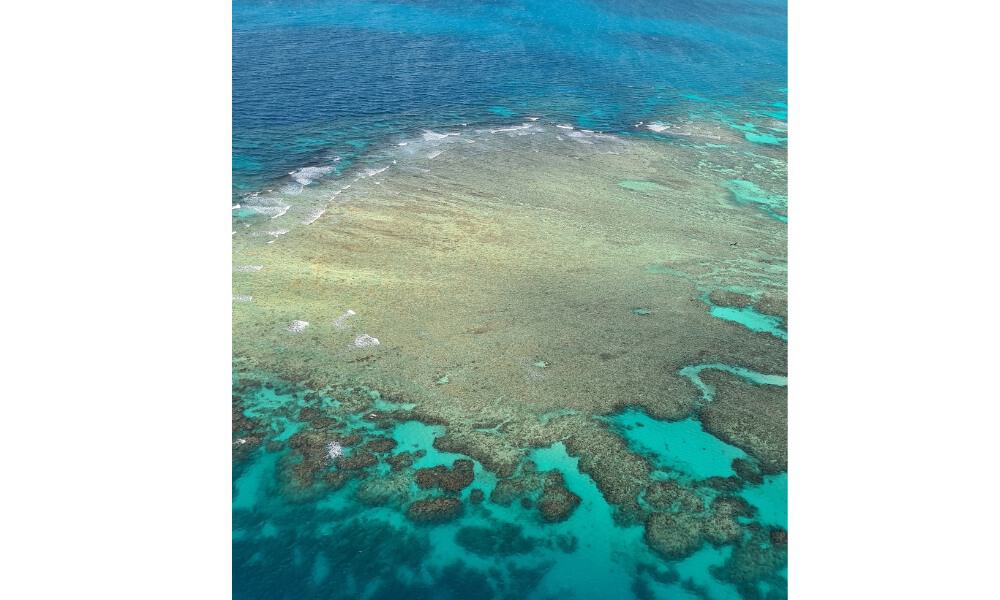
What Is The Great Barrier Reef Known For?
The Great Barrier Reef is the largest coral reef system in the world. Spanning over 2,300 kilometres (1,430 miles), it has over 2,900 separate reefs and 900 islands and can be seen from space!
Although damaged, the entire Barrier Reef is still a vibrant ecosystem and is recognised as a UNESCO World Heritage Site.
Renowned for its biodiversity, the Barrier Reef is home to a vast array of sea creatures, including more than 1,500 species of fish, 400 species of coral, and numerous other forms of marine flora and fauna. It plays a crucial role in the global ecosystem and its corals are an important breeding ground for countless marine species that venture into all of the world’s oceans.
Where Is The Great Barrier Reef?
The Great Barrier Reef is located off the north-eastern coast of Queensland, Australia and sits between 20 and 160 km (12 – 100 miles) out in the Coral Sea. The proximity of the Great Barrier Reef to the Australian mainland makes it easily accessible as a day trip from Cairns, Port Douglas and Airlie Beach.
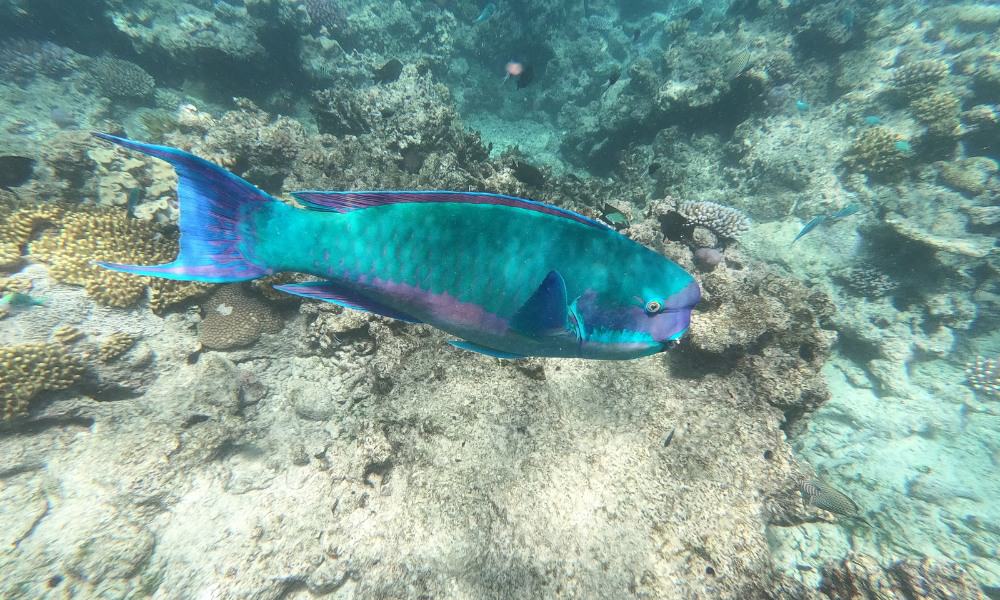
Reasons Why The Great Barrier Reef Is Special
The Great Barrier Reef is one of the world’s most bio-diverse ecosystems and is absolutely teeming with life. It is home to thousands of marine species, including vibrant corals, colourful fish, giant clams, 6 of the world’s 7 sea turtle species, sharks, dolphins, whales and manatees.
The relatively shallow, crystal-clear water allows for close encounters with marine life for swimmers, snorkellers and divers. There are, however, plenty of other unique ways to experience the Great Barrier Reef without getting wet. Island hopping scenic boat trips take you to some of the best spots on the reef, while a helicopter tour will deliver breathtaking aerial views.
Some tour companies employ descendants of the Indigenous people who give great, first-hand accounts of their cultures and traditions.
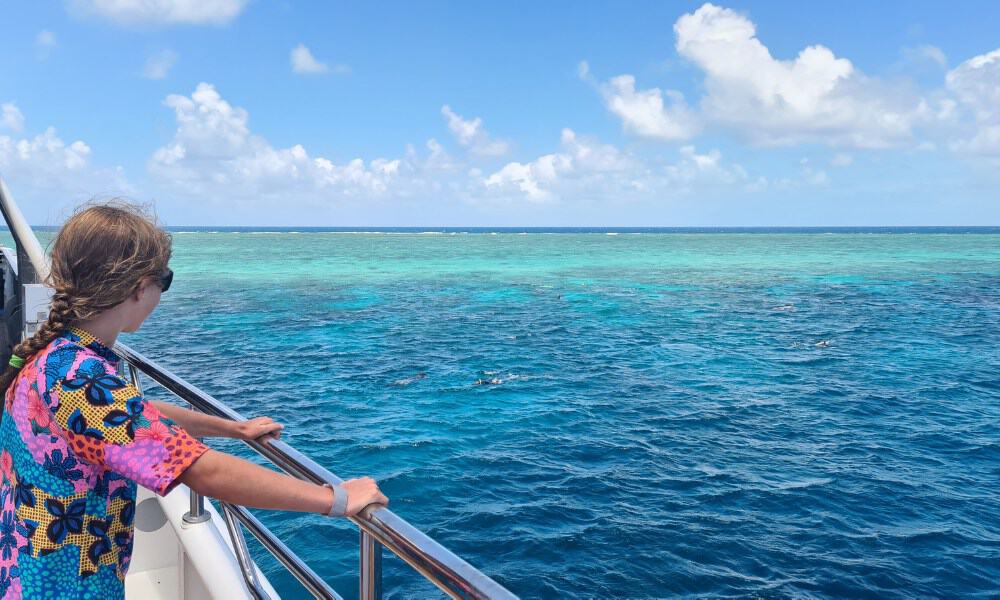
Which Reef Is Best To Visit?
With almost 3000 reefs to choose from, deciding which reefs to visit can seem daunting. To help you decide, here are some popular sites:
- Hastings Reef – a large horseshoe shaped reef with colourful corals, giant clams and hundreds of fish.
- Saxon Reef – a mix of deep and shallow water makes this area perfect for family snorkelling. You can find eels, crayfish, stingrays and even small sharks.
- Green Island – a veritable hub of marine life. This lush underwater world is one of the closest points to the mainland. It is reached by a short boat trip from Cairns. Once on the island, wading out from the beach to some of the deeper sections is possible.
- Agincourt Reef – a series of small reefs offering a range of activities. Located off the coast of Port Douglas, the reef is suitable for all.
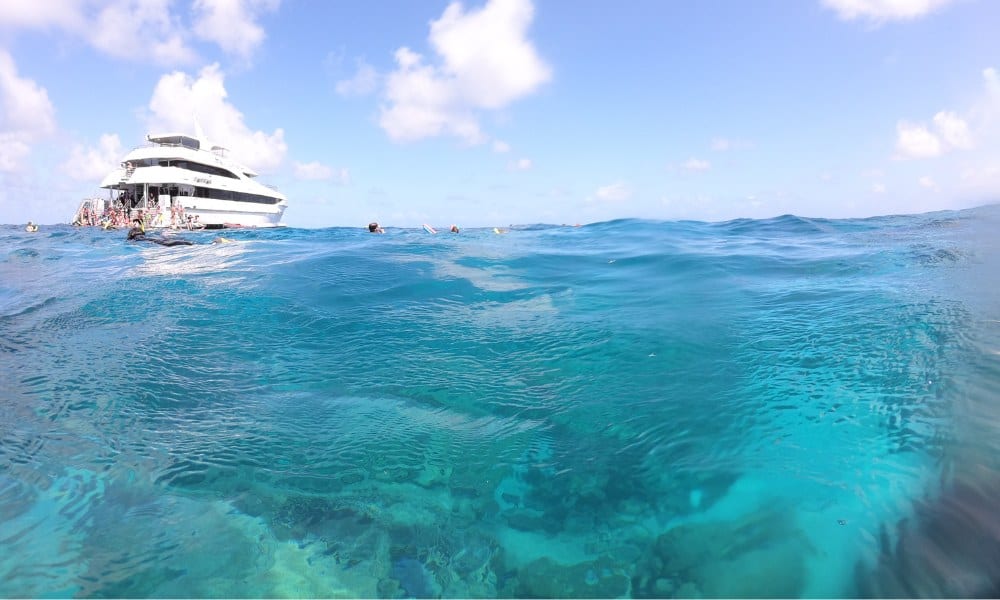
The Best Time To Visit Great Barrier Reef, Australia
You can visit the reef system year-round, but the best month to visit will depend on the experience you seek.
Wet Season – November to March
Wet season coincides with Australian Summer with high air temperatures around 30-40°C and up to 32°C in the water. High humidity, rain storms, and murky water may give you a less than perfect experience. Snorkelling tours will still be hosted on calm reefs, but storms frequently lead to cancellations. On the plus side, however, there will likely be far fewer tourists!
Deadly box jellyfish also cause problems at this time of year, which could make it the worst time to visit the Great Barrier Reef. If you do decide to go in the water, you should wear a stinger suit.
dry season – June to October
The Australian winter and spring months bring pleasant air and sea temperatures of around 25°C (77°f). This is, in our opinion, the best time to snorkel at the Great Barrier Reef. The dry season has crystal clear water with excellent visibility, helping ensure you gain the most from the experience.
Unfortunately, perfect reef conditions bring higher crowds, but for most people, this is still the best time to visit the Great Barrier Reef.
Great Barrier Reef Shoulder season – April, May, November
Alternatively, late autumn (April and May) or early spring (November) may be worth considering. Despite the variable weather conditions, being out of peak season means there are fewer crowds.
How To Visit The Great Barrier Reef
There are three main options to visit the Reef for tourism and we’ve listed them below.
By Day trip By Boat
A day trip is a great way to experience the Great Barrier Reef. The main activity is snorkelling at one or two reefs but other options are available depending on your tour. This is the most popular way to spend 3-5 hours at the reef and the one we chose.
➡️Book your Great Barrier Reef day trip here
On a Liveaboard
Stay on board a well-appointed yacht for a night or more, exploring the islands and reefs within the Great Barrier Reef Marine Park. This is a much more inclusive experience that will allow you to see more of the area over a larger time scale.
➡️Book the best liveaboards on the Great Barrier Reef here
By Helicopter
Experience an exceptional aerial flight over the Great Barrier Reef while taking in the breathtaking views of the coral formations surrounded by shades of blue. We opted to return to Cairns by helicopter and it was one of the highlights of our whole trip. If budget allows, consider taking a scenic flight from Cairns as part of your tour boat package. Appreciating the sheer scale of the world’s largest coral reef system is best done from the air and you will not be disappointed!
➡️Book your Great Barrier Reef scenic helicopter here
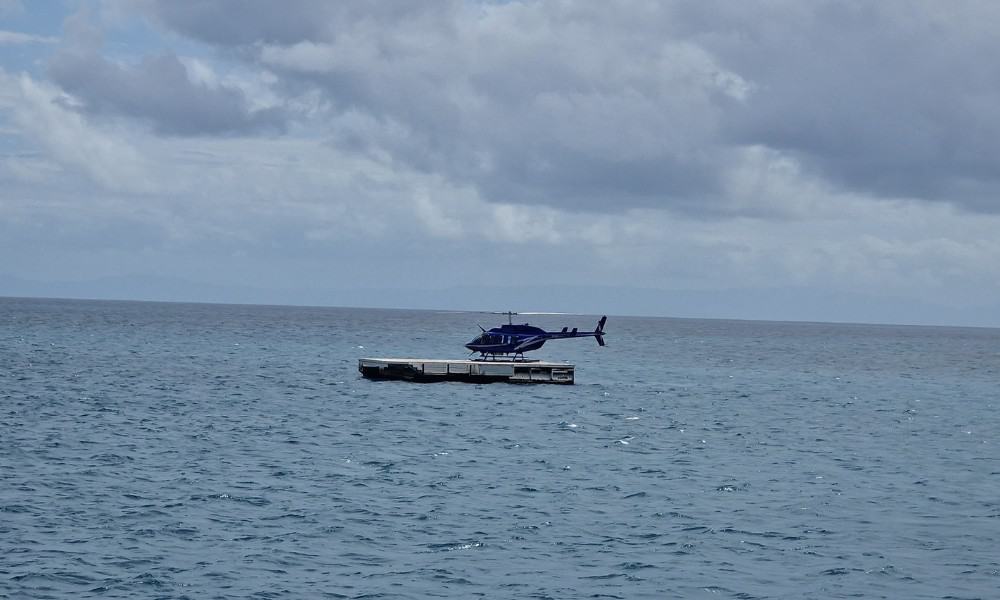
Activities At The Great Barrier Reef
Whether you are looking for an over or underwater experience at the Great Barrier Reef, you are in for a treat. Although reef snorkelling is what most visitors choose, there are options to stay dry too.
Snorkelling The Great Barrier Reef – Snorkelling can be done independently or as part of a guided tour. Our boat trip included two different snorkelling locations. The reefs were both very different experiences.
Scuba Diving – Diving experiences are available for both novices and qualified divers. These allow you to dive into some of the most spectacular spots in the world.
Semi–Submersible (SUB) – This is a great option to explore the Great Barrier Reef without actually getting wet. Small groups take a reef tour with a guide in a submarine.
Glass-bottom Boat – These boats allow you to view the reef without getting wet. They are a great option for young kids or anyone who chooses not to go in or under the water.
Helicopter Scenic Flight– Circling the reef by helicopter gives panoramic aerial views. Scenic tours can be added to a boat trip or booked as an extended flight over a larger area of the reef from the mainland.
Water Slide – Some reef boat trips include water slides with snorkelling packages.
Spotting Dolphins and Whales – There are possibilities to spot large marine life, such as dolphins and whales, travelling through the Great Barrier Reef Marine Park.
Picnic On A Private Island – Perfect white sand beaches surrounded by crystal clear water make for the perfect picnic location. We had a family picnic at Whitehaven Beach while watching reef sharks along the shore.
Cruise To The Great Barrier Reef On A Private Yacht – Charter a yacht and cruise the reef at your own pace. Sailing around the Whitsundays is a popular option.
Facts About The Great Barrier Reef
The Great Barrier Reef is outstanding in more ways than one.
- The Great Barrier Reef is the largest coral reef system in the world
- Coral is made up of tiny living organisms known as polyps
- The Great Barrier Reef hasn’t always been underwater
- Over 1600 types of fish and 3000 species of molluscs live in and around the reef
- It is home to endangered species such as sea turtles and dugong
- You can see the Great Barrier Reef from space
- Less than 10% of the reef is used for tourism
- A third of the world’s coral is located on the Great Barrier Reef
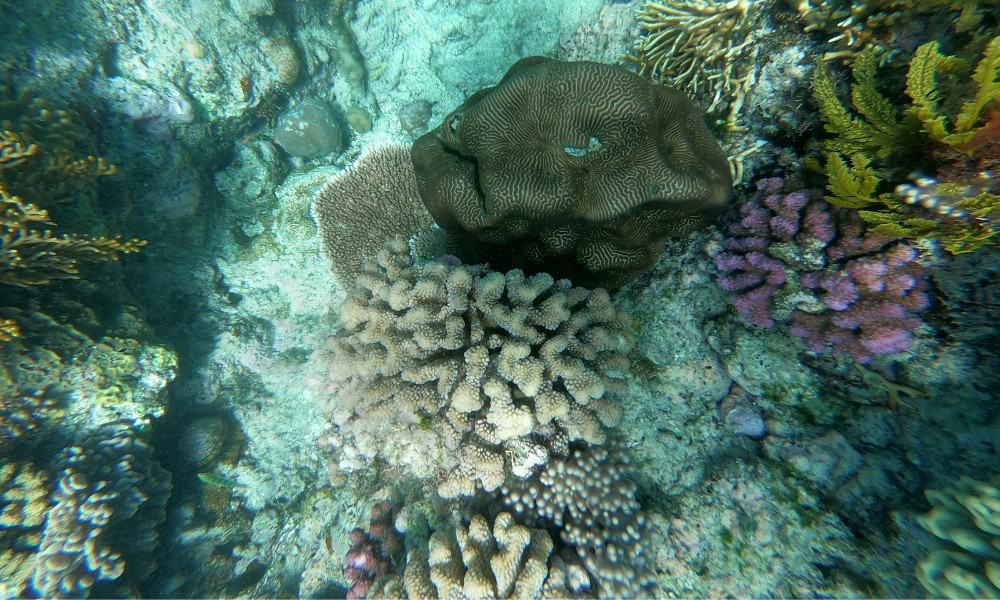
Should We Be Visiting The Great Barrier Reef?
What was a once-in-a-lifetime visit has now become one of the top things to do in Australia. The Barrier Reef is undoubtedly impressive, but the challenges of climate change, coral bleaching, and extreme weather events pose a significant threat to this delicate ecosystem.
Conservation efforts and responsible tourism practices have led to some improvements in the health of the reef. While this is encouraging, much more must be done to preserve it for the future. Make sure you book tours through responsible, licenced operators who positively contribute to preserving the reef.
FAQ: The Great Barrier Reef
The Great Barrier Reef is a protected marine park. Yes, Snorkelling, swimming and diving are the best and most eco-friendly ways to experience the magic of the reef.
Day trip boat tours take anywhere from 3-5 hours to explore the area. Whereas to your can spenn upwards of 3-7 days on a liveaboard. Any amount of time spent on the Great Barrier Reef in Australia is worthwhile and while you could always spend longer a few hours works especially with kids.
While the average depth of the Barrier Reef is 35 metres; most of the diving and snorkelling reefs are between 5 and 35 metres deep. These shallow reefs get plenty of light, providing great underwater visibility with various coral and colourful fish.
You cannot see the Great Barrier Reef from mainland Australia. Cairns, Port Douglas and Airlie Beach all provide fast access to the reef by boat or helicopter. A helicopter ride will give you the best aerial view while snorkelling the best up close encounter of the reef.
Yes, several species of shark exist around the Great Barrier Reef. Lemon, Reef and Leopard Sharks are the most common and generally don’t pose a threat to visitors.
Final Thoughts: Is The Great Barrier Reef Worth Visiting?
Even with the damage caused by coral bleaching and other threats such as pollution and increasing acidity, the Great Barrier Reef is still a great place to visit. Many parts of the reef are flourishing and there are signs of recovery in some of the damaged areas.
When to visit really comes down to what you want from your experience. It may mean a compromise between perfect conditions with crowds or less-than-perfect conditions with fewer visitors.
The Great Barrier Reef is still an ultimate bucket-list experience for anyone wanting to see first-hand one of the most eco-diverse marine environments on the planet. The stunning corals and colourful fish are still there to be seen. By travelling responsibly you can visit the reef while minimising your environmental impact.
